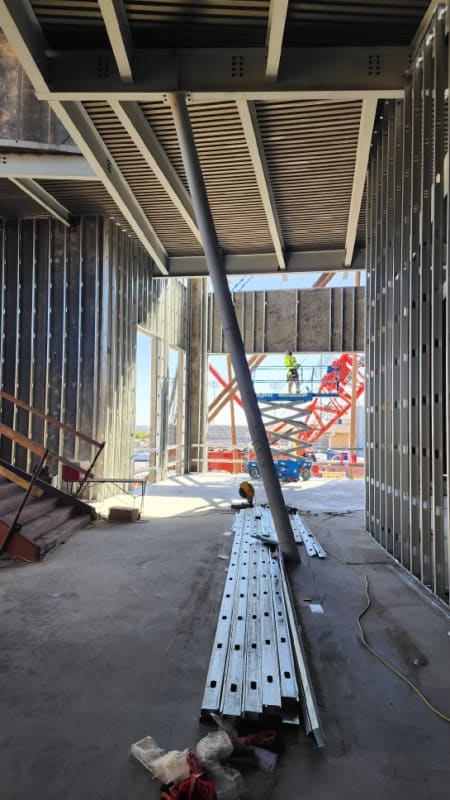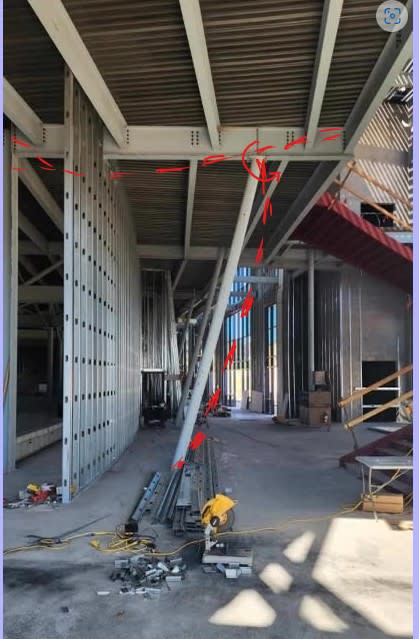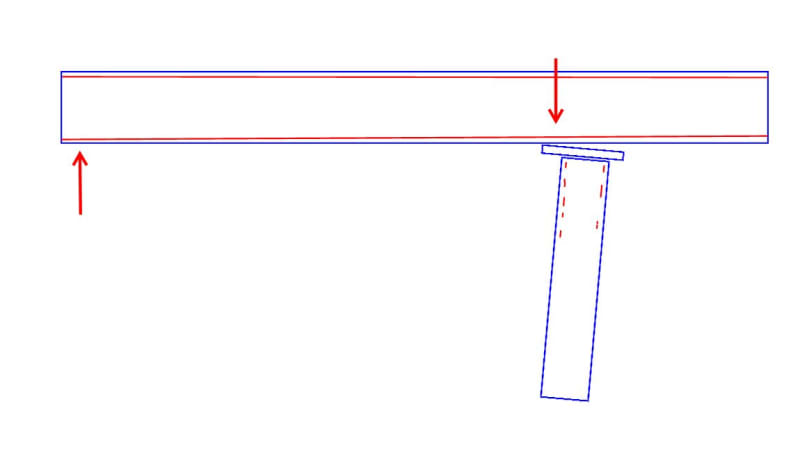mlevario99
Structural
I have a project under construction where we have some slopped columns. They support a cantilever beam condition. The angle of the column is 75 degrees with the horizontal. The grid of the columns is in a radius. The height of the column, from the finish floor to the top of column is 23'-1" is a steel pipe HSS 8.625X0.322. It was noticed the columns is bowing, about 1.5", they use a string to measure. The top of the column has a cap plate with holes so it can be bolted to the beam instead of welded. To me, it seems like during erection the column was forced a little so the holes could fit. I am suggesting to shore the beam, remove the bolts and allow the column to move so it can be straight, then weld the cap plate to the beam flange.
Any opinions on why the column bowed?
I am including some pictures of one column.
thanks


Any opinions on why the column bowed?
I am including some pictures of one column.
thanks




